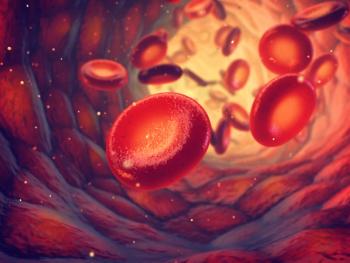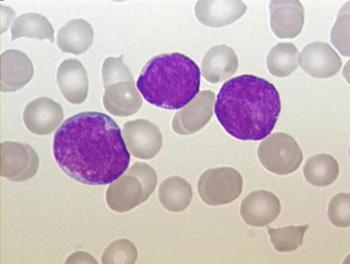
Talazoparib/Enzalutamide Combo Appears Tolerable in Prostate Cancer
A recent phase 3 trial of the combination included a total of 398 patients with metastatic castration-resistant prostate cancer, unselected for homologous recombination repair gene alterations, in the safety cohort.
According to safety results from the phase 3 TALAPRO-2 study (NCT03395197), combination talazoparib plus enzalutamide was a tolerable treatment with dose modifications or standard supportive care for men with metastatic castration-resistant prostate cancer (mCRPC).1
These findings were presented by lead author, Arun Azad, MBBS, PhD, FRACP, during the
“TALAPRO-2 is the first phase 3 study to evaluate talazoparib plus enzalutamide as a first-line treatment in patients with metastatic castration resistant prostate cancer, or mCRPC… Here we provide a detailed overview of the safety profile of talazoparib plus enzalutamide in the all-comers population of the TALAPRO-2 trial, with the aim of understanding how adverse events were managed,” said Azad during a presentation of the results. Azad is a medical oncologist at Peter MacCallum Cancer Centre in Australia.
Patients in the phase 3 TALAPRO-2 study were randomized 1:1 to receive 0.5 mg of talazoparib or placebo plus enzalutamide at 160 mg once daily. A total of 398 patients were included in the safety cohort of patients unselected for homologous recombination repair (HRR) gene alterations (all-comers).
At the point of study entry, 44.7% of patients had grade 1 anemia, and 4.3% had grade 2 anemia.
Data showed that 98.5% of patients experienced all-cause any-grade treatment emergent adverse events (TEAEs). Serious TEAEs were experienced in 19.6% of patients, and 19.1% discontinued treatment with talazoparib due to TEAEs. The rate of discontinuation of placebo due to TEAEs in the placebo/enzalutamide cohort was 12.2%.
The most common grade 3/4 TEAE in the talazoparib/enzalutamide arm was anemia (65.8%), which led to a discontinuation of treatment in 8.3% of patients. The median time to first onset of grade 3 or higher anemia in patients was 3.3 months, and the median duration was 16 days. Anemia was managed in patients using dose modification once anemia was grade 3 or higher, and/or with standard supportive care. Among all patients, 43.2% received dose reduction due to anemia.
“Despite dose reduction, the relative dose intensity of talazoparib remained high, above 80%. The incidence of talazoparib dose interruptions and reductions was similar during the all-comers and HRR deficient only populations. However, the rate of talazoparib discontinuation due to adverse events was about half in the HRR deficient cohort compared to the all-comers cohort,” said Azad.
Other common hematologic TEAEs in the all-comers cohort included neutropenia, which was observed in 35.7% of patients, and thrombocytopenia, which was observed in 24.6% of patients. Median onset of neutropenia was 2.3 months, and median duration was 12 days. Median onset of thrombocytopenia was 2.3 months, and median duration was 19 days.
The 3 most common non-hematologic TEAEs included fatigue (33.7%), back pain (22.1%), and decreased appetite (21.6%).
Overall, the median treatment duration of talazoparib was 19.8 months (range, 0.0-42.8). Grade 3 or higher TEAEs typically occurred early in treatment (within 6 months of starting treatment) and resolved in less than a month with dose modification and supportive care.
Similar incidence of all-cause TEAEs were seen between the all-comers cohort and the HRR deficient only cohort.
Additional data from TALAPRO-2
TALAPRO-2 is an ongoing phase 3 study oftalazoparib plus enzalutamide in patients with mCRPC. Patients were divided into 2 cohorts, made up of those with and without HRR gene alterations (all-comers) and an HRR-deficient only cohort.
The trial recently reported a clinically meaningful and statistically significant improvement in radiographic progression-free survival (rPFS) among patients receiving talazoparib plus enzalutamide versus placebo plus enzalutamide, regardless of HRR status.2
At the time of data presentation, the median rPFS had not yet been met for patients receiving talazoparib and enzalutamide, compared with 21.9 months among those receiving placebo plus enzalutamide. Overall, the addition of talazoparib was found to reduce the risk of progression or death by 37% (HR, 0.63; P <.001).
References
- Azad A, Fizazi K, Matsubara N, et al. Talazoparib (TALA) plus enzalutamide (ENZA) in metastatic castration-resistant prostate cancer (mCRPC): Safety analyses from the randomized, placebo (PBO)-controlled, phase 3 TALAPRO-2 study. J Clin Oncol. 10.1200/JCO.2023.41.16_suppl.5053
- Agarwal N, Azad A, Carles J, et al. TALAPRO-2: Phase 3 study of talazoparib (TALA) + enzalutamide (ENZA) versus placebo (PBO) + ENZA as first-line (1L) treatment in patients (pts) with metastatic castration-resistant prostate cancer (mCRPC). J Clin Oncol. 10.1200/JCO.2023.41.6_suppl.LBA17
Newsletter
Stay up to date on recent advances in the multidisciplinary approach to cancer.

















































































